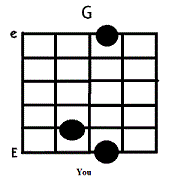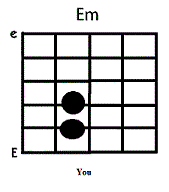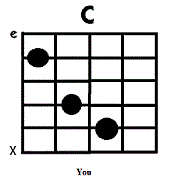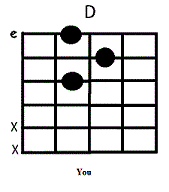I still remember the first four chords I learnt as a beginner when I started learning guitar. While those chords need not be the first fours chords everyone learns at the beginning, I find them very much useful in many songs we get to play today.
The instructions are based on a right handed guitar. If you are left handed, just flip everything in the opposite direction. The guitar should be a left-handed guitar too.
Typically, it should not take you more than ten to fifteen minutes to properly play each of the chords on the guitar. With just a little practice, you can be performing your favorite pop songs.
Equipments needed:
- Guitar
- Pick (optional)
Before learning the chords, you need to learn the parts of a guitar (if you don’t already know them).
Here are four common chords that you must know:
- G major – G
- E minor – Em
- C major – C
- D major – D
Let us go through them one by one.
Playing G major
320003
Here is what the chord will look like at a chord diagram.

The first chord is G.
Step 1: Put your left middle finger on the sixth string (low E), third fret.
Step 2: With the middle finger on the string, place your pointer finger on the fifth string second fret.
Step 3: Then your ring finger on the first string (high E) third fret.
Step 4: Using your right hand, strum the guitar and you should hear the first chord to your song.
If the string sound muted, make sure your left fingers are pressing firmly on the string. It also helps to curve your fingers so they don’t accidentally play the string next to them.
Playing E minor
022000

The easiest chord of the four I am introducing.
Step 1: With your middle finger, press the fifth string second fret.
Step 2: With your ring finger, press the fourth string second fret.
Step 3: Strum all six strings and you will hear your E minor.
Playing C major
x32010

Step 1: Place your ring finger on the fifth string third fret.
Step 2: Place your middle finger on the fourth string second fret.
Step 3: Place your pointer finger on fifth string first fret. This note might be a little tricky so make sure you press your index finger firmly on the string to get the full note.
Step 4: Without strumming the sixth string, start the strum from the fifth string where your ring finger is at (the sixth string note will make the C chord not sound like a C chord). Strum the chord and you should hear C major.
If it doesn’t sound right, try pressing your fingers firmly on the strings and make sure your fingers aren’t accidentally resting against another string.
Playing D major
xx0232

Step 1: Using you index finger, hold it on the third string second fret.
Step 2: Using your ring finger, hold it on the second string third fret.
Step 3: Using your middle finger, hold it on the first string second fret.
Step 4: Strum all the strings EXCEPT the fifth and sixth.
Practice makes perfect
It takes practice to switch chords. The best way to practice transition is to simply play the chord progression over and over again. If you do this well, you will be able to play almost every song on the radio. The only thing that will be different for each song is the way you strum.
Feel free to contact me or drop a comment!